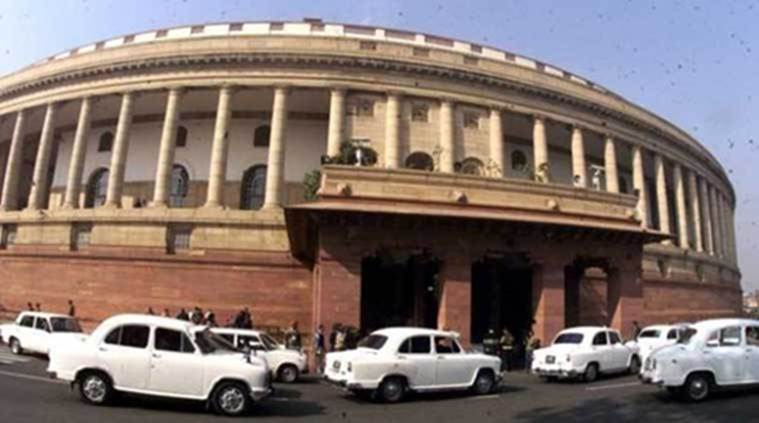Across the aisle: Navigating through the do’s and don’ts
"I think the government, having shot itself in the foot by demonetisation, should quietly accept that growth in 2017-18 and 2018-19 will be between 6 and 7 per cent," says former finance minister P Chidambaram

Every budget is determined by the context and the context is determined by the circumstances — economic, political and the year in the term of the government. Budget 2017-18 will be the fourth budget of the NDA government (one more remains) and it will be presented when, according to the RBI and the CSO, the economy is slowing down. The political circumstance is that the budget will be presented when the election process is underway in five states, including the prize state of Uttar Pradesh.
The red lines
At this point in its term, a government cannot make too many new promises: there will not be enough time to deliver tangible outcomes on any new promise and the time that remains has to be used to deliver on the old promises. That’s the first red line. The outlook for the world’s economy is uncertain. Two developments are likely: the US government may turn against free trade and overseas investments by American companies and the US Fed may raise domestic interest rates. Since November 2016, foreign capital has been flowing out of India. The budget must not send any signal that will accelerate the outflow. Hence, the budget has to remain steadfast on the path of fiscal consolidation (FD < 3 per cent), containing the current account deficit (< 1.5 per cent), and price stability (CPI < 4 per cent). That’s the second red line
The government’s assessment of the security situation is bleak and pessimistic. The new Chief of Army Staff has talked of being prepared for a two-front war (leaving us wondering why he said that). The government is on a massive arms-buying spree and the bills must be paid in 2017-18 and subsequent years. The budget must provide for a very large increase in the defence budget, reducing the space for other expenditure. That’s the third red line.
Private investment has practically dried up. Credit growth is at its lowest level in several decades. Exports are languishing. Demonetisation has hit private consumption. The only engine left to the government is government expenditure. If government increases its capital expenditure, less money will be available for welfare programmes. That’s the fourth red line. Corporates expect a sharp cut in corporate tax as a reward for not vocally protesting a disruptive action like demonetisation and widespread excesses by tax officials in the name of tax law enforcement.
Individuals expect a cut in personal income tax rates as recompense for the misery caused by demonetisation and increased indirect taxes. The government will look foolish if, after cutting tax rates, the budget projects aggressive tax revenue targets. That’s the fifth red line. How will the Finance Minister navigate his way among these red lines? And how will he find the revenues for the new paths that the Prime Minister and the BJP seem to want to cut?
We may take note of the balloons that have been floated in recent weeks:
— Loan waiver for farmers
— Universal Basic Income (UBI)
— Cut in corporate tax rates
— Banking Cash Transaction Tax (BCTT)
I shall now offer my unsolicited advice to the Finance Minister. I think the government, having shot itself in the foot by demonetisation, should quietly accept that growth in 2017-18 and 2018-19 will be between 6 and 7 per cent, and that is not a rate of growth that should be scoffed at. The government must firmly reject policy advice based on an exaggerated estimate of the growth rate. Once this issue is settled, it is fairly easy to identify the Do’s and Don’ts for the Finance Minister.
The Do’s
— The N K Singh Committee is reported to have carved out a few exceptions to the fiscal deficit limit of 3 per cent. In my view, the only justifiable exception is when there is a declared war. Stick to the target of 3 per cent in 2017-18.
— Promote private investment. Hold talks individually with business houses and entrepreneurs and help them at every step until the project has achieved Commercial Operation Date. Target 50 major projects in 2017-18.
— Sell loss-making public sector enterprises (PSEs) and divest government stake up to 100 per cent in non-core PSEs.
— Pass the GST Bills and implement GST no later than October 1, 2017. Aim at a broad tax base than at a high tax rate. Cut wasteful government expenditure and use the savings to compensate the states for any revenue shortfall.
— Update the Direct Taxes Code and pass it. It is the best answer to tax rate and tax evasion conundrums.
And the don’ts
— Do not cut direct tax rates. Instead, cut indirect tax rates (especially service tax and excise duties on petroleum products that have given you a ‘sugar high’ of revenue collection) to stimulate aggregate demand.
— Do not announce UBI. If you must, announce a pilot scheme and learn as you go forward. That’s how DBT and Aadhaar became the success they have.
— Do not introduce BCTT. Instead, amend the Income-Tax Act to expand the list of transactions that mandatorily require non-cash payments. Don’t meddle with the right of the people to use cash for normal, small transactions.
— Do not give up on reforms. Leave ‘welfarism’ to the states.
— Do not blame the UPA for the current economic situation. (The UPA delivered average growth of 7.5 per cent over 10 years and lifted 140 million people out of poverty). You have been in charge for 32 months.
Website: pchidambaram.in @Pchidambaram_IN



 →
→











0 comments:
Post a Comment